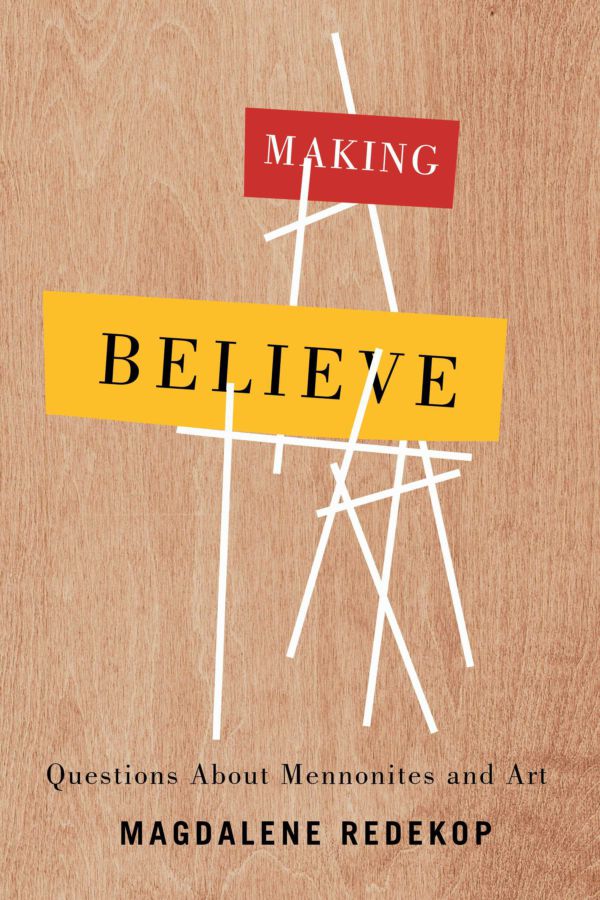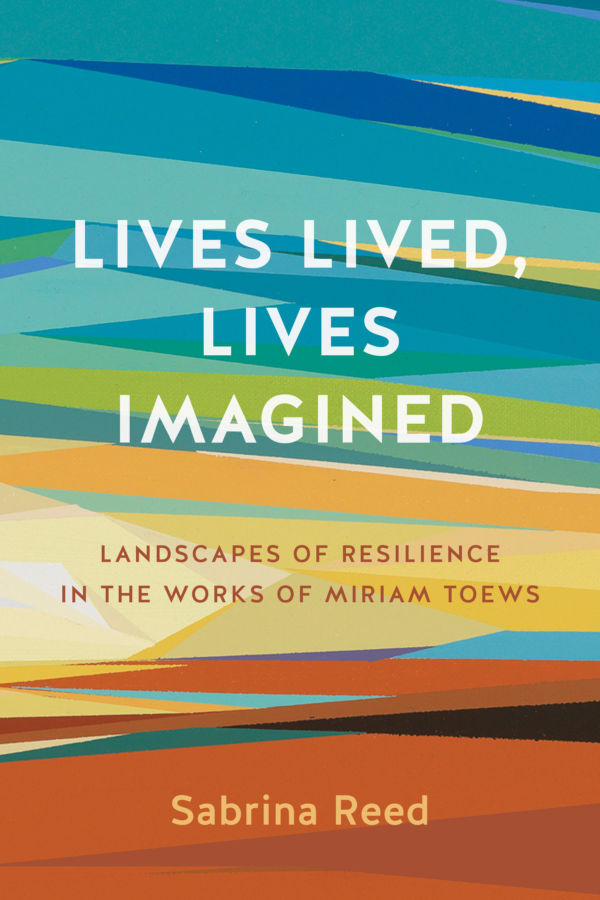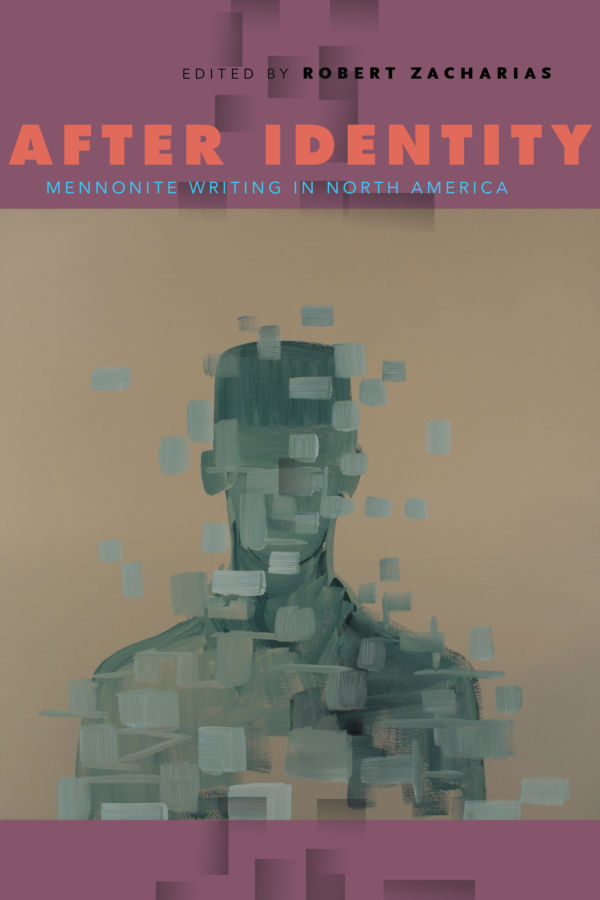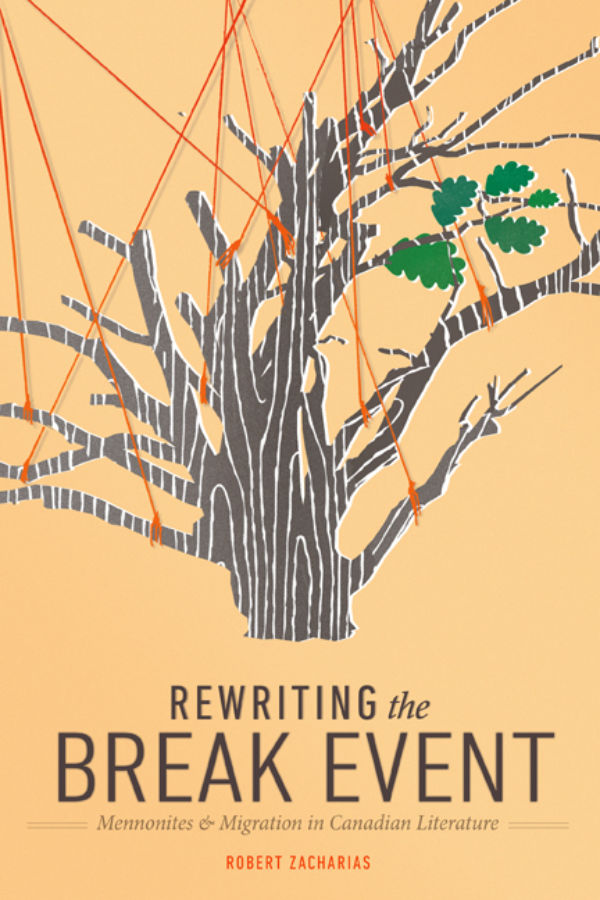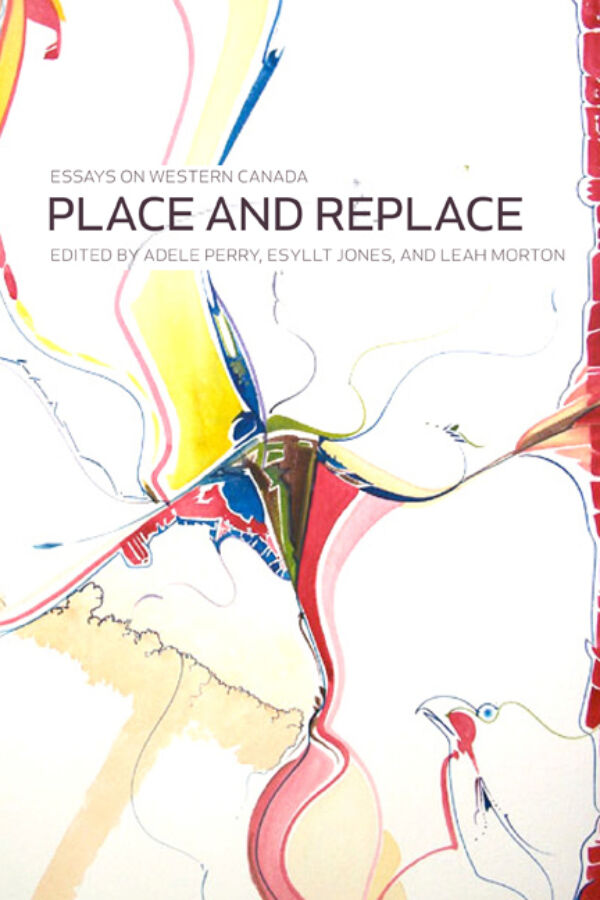Making Believe
Questions About Mennonites and Art
Overview
Making Believe responds to a remarkable flowering of art by Mennonites in Canada. After the publication of his first novel in 1962, Rudy Wiebe was the only identifiable Mennonite literary writer in the country. Beginning in the 1970s, the numbers grew rapidly and now include writers Patrick Friesen, Sandra Birdsell, Di Brandt, Sarah Klassen, Armin Wiebe, David Bergen, Miriam Toews, Carrie Snyder, Casey Plett, and many more. A similar renaissance is evident in the visual arts (including artists Gathie Falk, Wanda Koop, and Aganetha Dyck) and in music (including composers Randolph Peters, Carol Ann Weaver, and Stephanie Martin).
Confronted with an embarrassment of riches that resist survey, Magdalene Redekop opts for the use of case studies to raise questions about Mennonites and art. Part criticism, part memoir, Making Believe argues that there is no such thing as Mennonite art. At the same time, her close engagement with individual works of art paradoxically leads Redekop to identify a Mennonite sensibility at play in the space where artists from many cultures interact. Constant questioning and commitment to community are part of the Mennonite dissenting tradition. Although these values come up against the legacy of radical Anabaptist hostility to art, Redekop argues that the Early Modern roots of a contemporary crisis of representation are shared by all artists.
Making Believe posits a Spielraum or play space in which all artists are dissembling tricksters, but differences in how we play are inflected by where we come from. The close readings in this book insist on respect for difference at the same time as they invite readers to find common ground while making believe across cultures.
Reviews
“Making Believe combines one woman’s deep intellectual and emotional engagements with family memory and community history as she traces the origins of the artistic renaissance among Mennonites in southern Manitoba. Art and play are essential to all of life, Redekop insists, as she makes the case for dialogic risk, refusing to shun the world or the worldly, whatever form that gesture may take. Her passionate voice speaks from the borders straight to our current cultural binds.”
Julia Spicher Kasdorf, Professor of English and Women’s, Gender and Sexuality Studies, The Pennsylvania State University
"Making Believe sharpens its rhetorical edge on the whetstone of genre-play, granting special attention to the dual questions of art’s place in a culture, and of Mennonite culture’s place in art. Reading slippage, leeway, and productive margins of error, Magdalene Redekop brings her clown-capacious eye to the many ways text and performance ‘make belief’ for us. Her critical-creative voice is fierce and generous; this is literary history written by a witness, something especially needed in the larger field of Canadian literature where memories can be both short and revisionist. Read it and be reminded of how you believe.”
Tanis MacDonald, Wilfrid Laurier University
“One review cannot do justice to the comprehensive nature of the book. Redekop offers an encyclopedic compendium of artistic, critical, and cultural observations.”
Laura Friesen, Mennonite Quarterly Review
“Encourages readers to engage art by Mennonites—using a broad understanding of that designation—and dialogue with it, especially when it disturbs us.”
Gordon Houser, Anabaptist World
“Redekop builds on Mary Louise Pratt’s concept of the ‘contact zone’ to describe the place of creative cross-fertilization that she believes gives rise to art, especially for artists from sectarian backgrounds where religious belief provides the predominant narrative and world view.”
Ann Hostetler, Journal of Mennonite Writing
“When people think of art, Mennonites might not always be the first group to come to mind. Yet as Magdalene Redekop points out in Making Believe: Questions About Mennonites and Art, creativity through the arts is very much a part of Mennonite life, whether as a means of confirming identity as part of a community or as a means of questioning what it means to be a Mennonite.”
Susan Huebert, Winnipeg Free Press
"Woven into this densely researched scholarly, wide-ranging, and occasionally artist-based discussion is a lively personal commentary, rooted in Redekop’s own experience as the daughter of Kanadier Mennonites of the Manitoba west reserve, Plautdietsch-speaking farmers with large families, making do without electricity or indoor plumbing until the mid-60s. [...] The Mennonite artistic renaissance was, and continues to be, an extraordinary cultural happening, with its intense conflictual internal dynamics for traditionally minded Mennonites trying to cope with rapid modernization in their midst, and its spectacular new multiple award-winning, global, intercultural imaginative reach. Redekop’s lively telling of the story adds much new information and perspective to the growing oeuvre of scholarship and creative writing devoted to its emergence and present flourishing."
Di Brandt, Heritage Posting, Manitoba Mennonite Historical Society
"From the very beginning, Redekop makes clear the contradiction 'at the core of this book: while engaging with art by Mennonites, I will argue that there is no such thing as Mennonite art.' Redekop argues against an essentialized identity, vital to any nuanced understanding of a marginalized group. [...] One of the major strengths of the book is the engaging way that Redekop writes herself into the text, moving between voices and timelines. This is a personal journey, an account of a lifetime of grappling with questions about Mennonites and art."
Rachel Epp Buller, Mennonite Life
"Magdalene Redekop's Making Believe: Questions About Mennonites and Art is a rollicking ride through literature, music, and the visual arts. The book is a feast for the mind and eyes. Alongside its many literary examples it includes some three dozen illustrations – from Mennonite playing cards, to woodcuts, to photographs of paintings, mixed media projects, and sculptures. Two clown interludes involving Low German and masks add levity. The time is right for Redekop's book."
Jason Blake, Studia Anglica Posnaniensia
"Making Believe represents a lifetime achievement by its author. The book is an unusual integration of memoir, anecdotes, and scholarly analysis, supported by a bibliography of thirty-four pages."
Ervin Beck, The University of Toronto Quarterly, Letters in Canada 2020
"Throughout this stimulating book, [Redekop] aims to be provocative, not dogmatic. A very careful thinker, Redekop considers her topics (satire, tricksters, nostalgia, realism) from many angles... This is a serious and important book."
Sue Sorensen, Mennonite Historian
Awards
Mary Scorer Award for Best Book by a Manitoba Publisher (2021)
About the Author
Table of Contents
Apologia
Introduction: On Beginnings
Part I: Reframing Old Questions
Ch. 1 Making Believe: Sparks Flying in the Contact Zone
Ch. 2 Us and Them: Real Toads in Imaginary Ghettos
Interlude: Clowning with Low German
Ch. 3 Resisting Nostalgia: Little Shtahp on the Prairie
Part II: Witnessing a New Phenomenon
Ch. 4 Location, Dislocation: Harvesting a Literary Bumper Crop
Ch. 5 Melos and Logos: Talking About Music
Interlude: Clowning with Masks
Ch. 6 Iconoclash: Redecorating the Spielraum
Conclusion: On Endings

